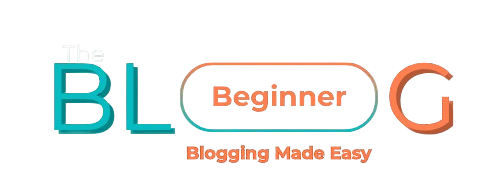WordPress Tutorials for Beginners: How to Manage & Customize Your Blog
Table of Contents
🧠 Introduction
WordPress is powerful — but let’s be honest:
When you first log in to the dashboard, it can feel like you’ve entered mission control at NASA 🚀
Menus everywhere. Widgets. Plugins. Pages. Settings.
What do you actually need to touch?
This tutorial will guide you step-by-step through the WordPress dashboard, showing you exactly how to manage and customize your blog like a pro — no coding needed.
🧭 Step 1: Get to Know the WordPress Dashboard
The dashboard is your blog’s control center.
🔹 Key Areas to Explore:
- Posts – Where you write and manage blog posts
- Pages – For static pages like About, Contact, etc.
- Media – All your images, PDFs, uploads
- Appearance – Themes, menus, widgets, customizer
- Plugins – Add or manage functionality
- Users – Add team members or contributors
- Settings – Control basic site functions (URL, time zone, etc.)
💡 Tip: Don’t worry about everything. Focus on the basics first.
🎨 Step 2: Customize Your Theme
Your theme controls the look and layout of your blog.
Go to: Appearance → Customize
Here you can adjust:
- Site logo & title
- Colors & fonts
- Header & footer layout
- Homepage settings
- Sidebar visibility
- Menu structure
Most modern themes like Blocksy, Astra, or Kadence include live preview customization — you’ll see changes in real time.
🧠 Want to go deeper? Use the theme’s custom panel (if available) for more styling options.
🗂️ Step 3: Create & Organize Pages
Pages are different from posts.
Use pages for:
- Home
- About
- Contact
- Privacy Policy / Terms of Use
To create one:
Go to Pages → Add New
Give it a clean layout, add your text, and click Publish.
Use the Block Editor (Gutenberg) for drag-and-drop elements like images, columns, buttons.
📝 Step 4: Write and Publish Blog Posts
Go to Posts → Add New
You’ll use the Gutenberg editor here too, which lets you:
- Add headings (H2, H3, etc.)
- Insert images, videos, quotes
- Use reusable blocks (like CTAs)
- Add categories and tags
Post Checklist Before Publishing:
- ✅ Clear title with a focus keyword
- ✅ Featured image added
- ✅ URL slug cleaned (short and keyword-based)
- ✅ Internal links to other posts/pages
- ✅ Category selected
- ✅ SEO plugin filled in (title + meta description)
- )
🧩 Step 5: Set Up Menus & Navigation
A clean, easy-to-use menu = better user experience.
Go to Appearance → Menus
- Create a new menu
- Add your key pages
- Set it as your “Primary Menu”
- Use dropdowns for sub-categories if needed
💡 Want a mega menu? Use the Max Mega Menu plugin.
🖼️ Step 6: Manage Media Like a Pro
Go to Media → Library
Upload:
- Blog graphics
- Featured images (1200×630 px recommended)
- Icons or logos
- eBook files, PDFs
Use descriptive filenames (like start-a-blog-guide.webp) and always fill out Alt Text for SEO.
⚙️ Step 7: Adjust Key Site Settings
Go to Settings panel (in sidebar)
Important Tabs:
- General – Site title, time zone
- Reading – Set homepage to static or blog roll
- Permalinks – Set to “Post name” for clean URLs
- Discussion – Enable/disable comments
- Media – Default image sizes
- Privacy – Link to your Privacy Policy page
🔐 Step 8: Add Security & Backup Tools
No tutorial is complete without keeping your blog safe and sound.
Recommended Plugins:
- Wordfence – Security firewall and login protection
- UpdraftPlus – Automated backups
- reCAPTCHA v2 – Protect forms from spam (via Contact Form 7 or WPForms)
Schedule weekly or daily backups to Google Drive for peace of mind.
✏️ Step 9: Keep Your Blog Updated
Your blog isn’t “set and forget.”
Make it a habit to check:
- 🔄 Plugin and theme updates
- 🔐 Security scan logs
- 📝 Update old posts
- 📈 Analytics data (via Site Kit or Google Analytics)
A healthy blog = a growing blog.
🔗 Internal Navigation
👉 Just getting started? Read WordPress Setup Guide
👉 Need help choosing plugins? Visit Best Themes & Plugins
👉 Want to customize faster? Explore Blog Design Tools
💬 Final Words
Learning WordPress might feel overwhelming at first — but it gets easier with every click.
Start with the basics, explore slowly, and don’t be afraid to break things (and fix them again 😄)
You’re not just building a blog.
You’re building a brand, a voice, a space on the internet that’s fully yours 💙
